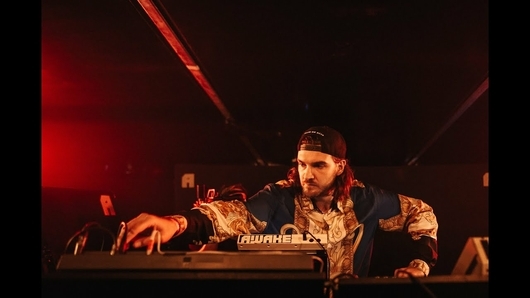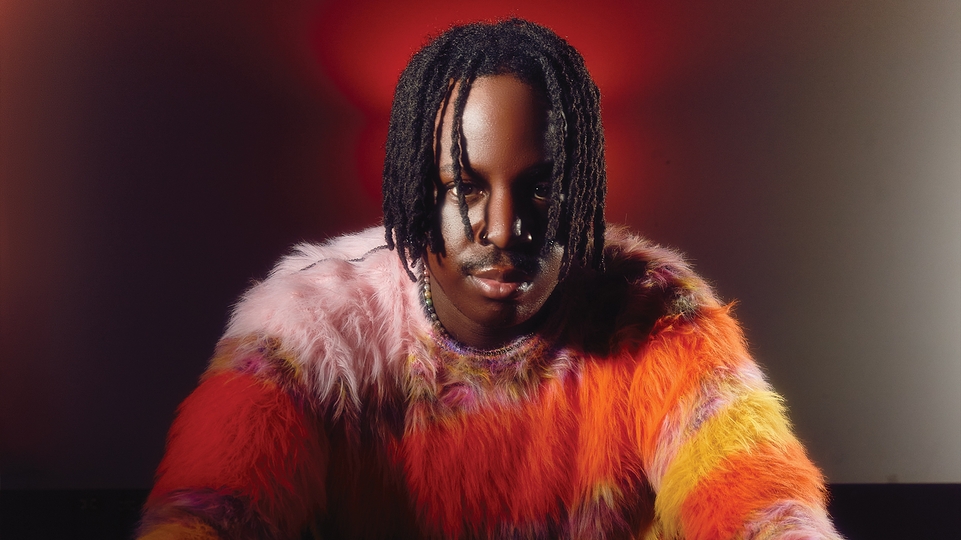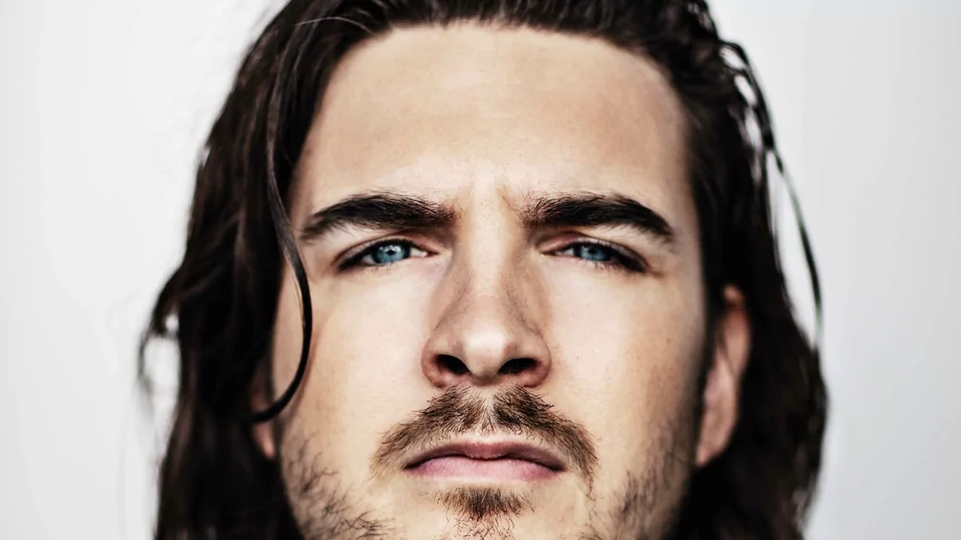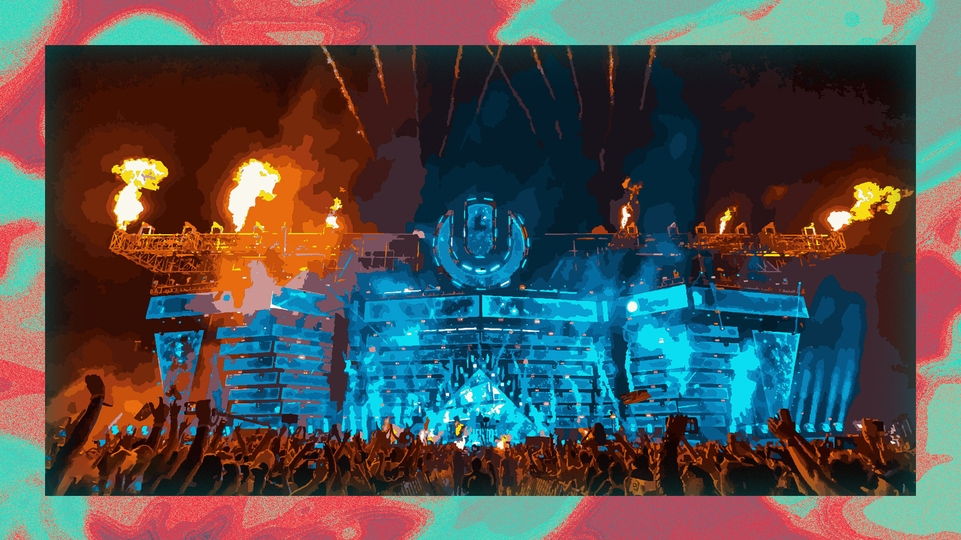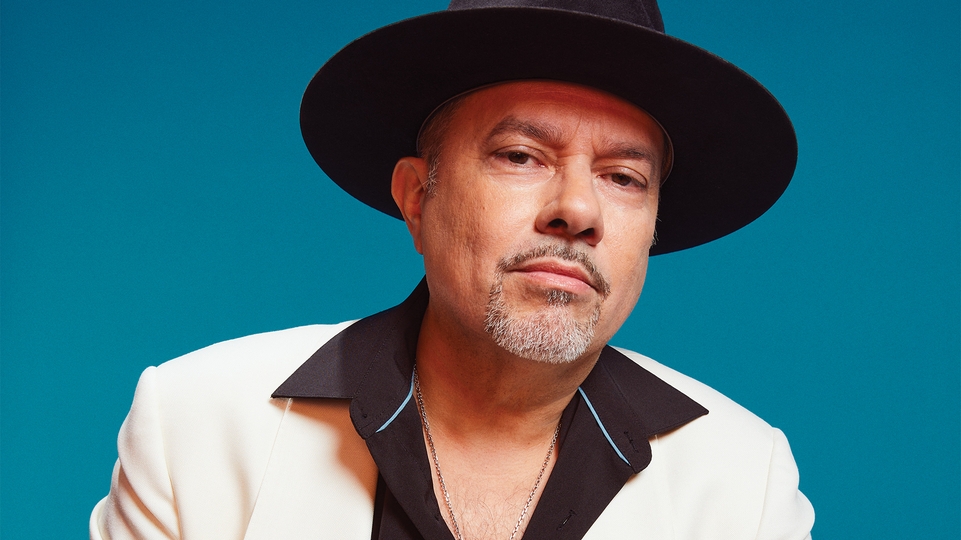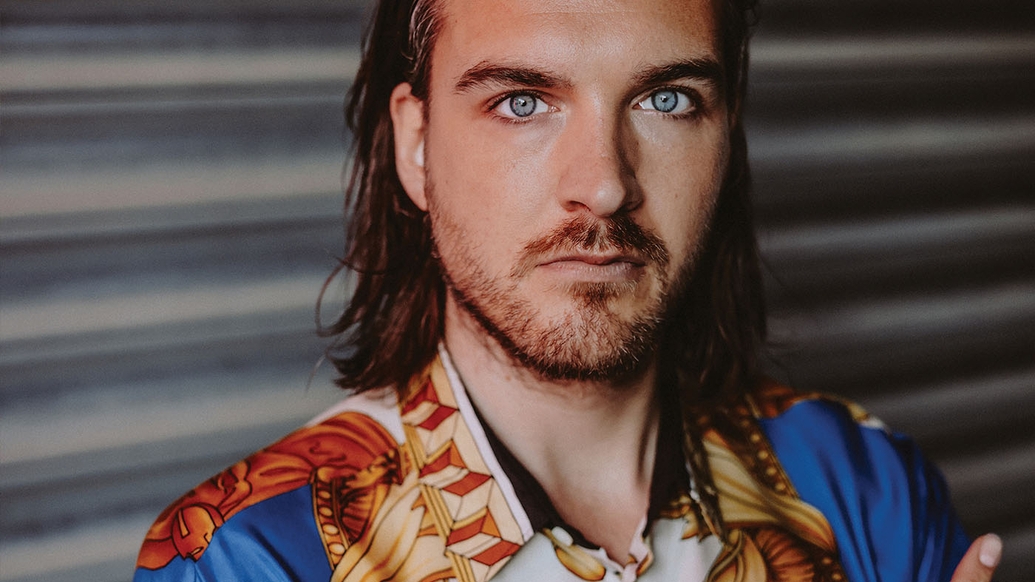
Reinier Zonneveld: live and direct
Before headlining international festivals with his immense live techno sets, Reinier Zonneveld cut his teeth on the Dutch underground rave circuit. Megan Venzin catches up with the artist to learn about his approach to performance, and why his fans can always expect the unexpected
It’s been a while since Reinier Zonneveld had to outsmart the cops. Nowadays, when the Dutch producer arrives at an event, it’s because he’s guaranteed hours on stage, during which he’ll build a live performance unlike any other he’ll unleash again. Flash back to a decade or so ago, and all he could do was hope that the illegal party would rage on long enough to reach his set time.
“You would never have any idea if you would actually make it to play yourself,” he tells DJ Mag, thinking back to the days when gigs were left purely to chance. “It’s funny, you could be at some legit, super nice rave somewhere, and then five minutes into your set, the police would come and shut it down. Then you’d have to leave right at that moment, or they’d take your stuff.” Did he ever have to surrender his laptop, synthesisers, or pedals? “No, of course not. I can run!” he responds laughing. “We knew all the exits.”
One close-call stands out in his mind, though. “We actually jumped over this little [creek] and the police didn’t want to jump, they didn’t want to get wet,” he explains looking off, his crystal blue eyes squinting at the corners as he chuckles. “It was a risky jump, too. First we threw the equipment and then took off behind it.”
This was surely no easy feat with some “30 kilos worth” of expensive tech in tow, but after years of playing the underground circuit he became skilled at plotting quick escapes. In this present era of his career, Zonneveld doesn’t need to worry so much about the authorities halting his flow. Flight interruptions are more likely to put a snag in the show schedule — he’s dealing with last-minute travel hiccups toward the start of our Friday-morning interview, for instance. He leaves to make a quick call and returns minutes later with an update.
“Tomorrow, I close Awakenings Festival on one of the main stages, but afterwards we fly with some artists to Monegros Festival in the desert of Spain and then on the way back, actually my girlfriend, she’s also a DJ, is playing for the first time at Tomorrowland a bit earlier in the day, and I don’t want to miss that,” he explains nonchalantly, rolling off the details of his itinerary like it’s hardly unusual. “And the flight back with the other guys, it’s too late for that. So we’ve fixed it now. It’s sort of a surprise, because it’s her first time at Tomorrowland, and that’s super special.” Even this heart-touching act is remarkably on-brand for the multifaceted musician, who always aims to achieve the unexpected.
Clearly, Zonneveld has come a long way since his time as the reigning king of The Netherland’s unauthorised party scene, where even without the support of major labels he amassed an impressive fan-base, who gladly skirted the law for their chance to see a master at work. To put his rise into perspective, let’s talk about his record-breaking show at ADE’s 2021 instalment. Last October, he sold out the Ziggo Dome — a 13,000-capacity arena generally reserved for acts like Adele, Billie Eilish, and U2 — in three hours. It also went down in history as the venue’s largest techno show ever.
Then this March, he took the stage twice at Miami’s Ultra Music Festival — once at Carl Cox’s Resistance Megastructure, and again alongside trance figurehead Armin van Buuren. Together, they celebrated the festival’s return after a two-year hiatus with their booming, post-pandemic banger, ‘We Can Dance Again.’ It was a defining moment of the event that reinforced the power of music and its ability to unite the masses. And just days ago, he unveiled his self-launched, sold-out Live NOW Festival at Amsterdam’s Hembrugterrein Zaandam. As the sole performer for the day-into-night event, he dished out original tunes for 11 hours straight.
Even in the midst of commercial success, Zonneveld marches to the beat of his own kick drum. His breakneck, extended sets are revered by audiophiles and artists from across the electronic realm, both for their intricate live elements, and the fact that they’re made up entirely of his own creations. With releases on imprints as diverse as Intec, Drumcode and Stil Vor Talent, he’s proven himself a true standout, never one to be put in a box or restricted by the opinions of others. As boss of the Filth On Acid label — which serves as home to a diverse group of artists that reflects his own genre-defying sensibilities — he’s paved the way for the next wave of performers as they seek their break at widespread notoriety. His route’s been somewhat unconventional, though it’s one he’s never second guessed.
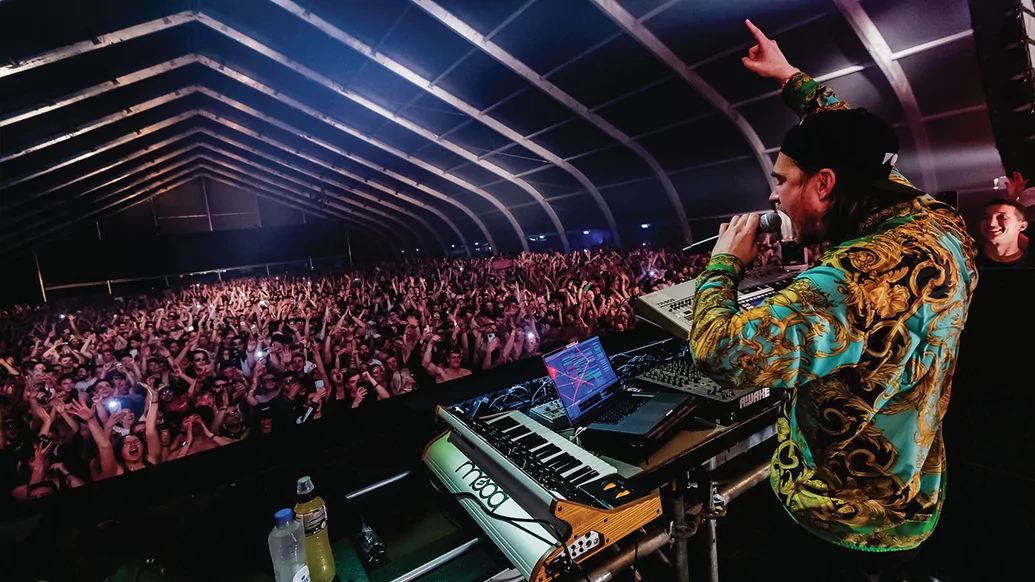
Zonneveld was a toddler when he touched piano keys for the first time. Some of his first memories are from lessons spent plunking out well-known melodies for hours on end. Innately he realized these exercises didn’t strike the same chord within him as did the thought of creating something brand-new.
“When you play piano, you get this classical training, which I also enjoyed, but in the end, what I liked the most was to write my own music, and I knew that as a little kid already,” he shares, before revealing that he composed his first original piano piece at just six years old. “I still have it somewhere at my parents’ place. I need to look for it,” he adds, before cracking a smile that suggests a lasting pride in his boyhood intuition.
Positioned in his futuristic studio, which boasts glowing red lights and walls stacked with an ever-growing modular collection, Zonneveld gives off a decidedly different vibe than the images of recital halls that his childhood stories conjure. His shaggy blonde hair and bright, patterned shirt scream “electronic icon”, and it’s a look that fits him well. “I was about to go to the conservatory when I was 16, but at the last minute I decided not to. I didn’t want to be a concert pianist, because it’s boring — which sounds a bit disrespectful, I know — but for me it’s boring,” he explains.
Recognising that a formal music education wouldn’t necessarily result in the future he imagined for himself, he decided he’d continue to compose his own music, with a backup plan, of course. He enrolled in an econometrics program at a nearby university, and used the government assistance that came along with it to fund his passion.
“I got the maximum loan you could get and just spent it all on synthesisers. I had this whole room full of them, and it was great just making music all day,” he shares fondly. “My friends from our student home were like, ‘Dude, go to [class], do something with your life.’”
He shrugged off their suggestions and stuck to his plan — music all day, study at night. At the time he was producing music on the trippy, ambient side of the spectrum, with a bit of hip-hop in the mix. A housemate took note of Zonneveld’s interests and decided to introduce him to something different. “One of the older guys was like, ‘Come with me to this reel-to-reel party, you will like the music, check it out,’” Zonneveld recalls. “I think it was a Richie Hawtin Minus night somewhere in Holland. I really loved that. I thought, ‘Okay, this is the music I want to make,’ and actually from that moment, I started to do that also.”
He immersed himself in this ignited appreciation for techno — the racing BPMs, the acid loops, the feverish basslines — and was hooked. Around this time he began experimenting with his homemade productions at remote raves, and subsequently his schoolwork sometimes took the backseat. “I remember one summer during my studies, a bit toward the end, I thought, ‘Let’s take a look at this loan,’ and I was like, ‘Okay, fuck, I need to finish my masters and get super good grades, because if it doesn’t work out with music, I’m broke as fuck!’ That was quite stressful.”
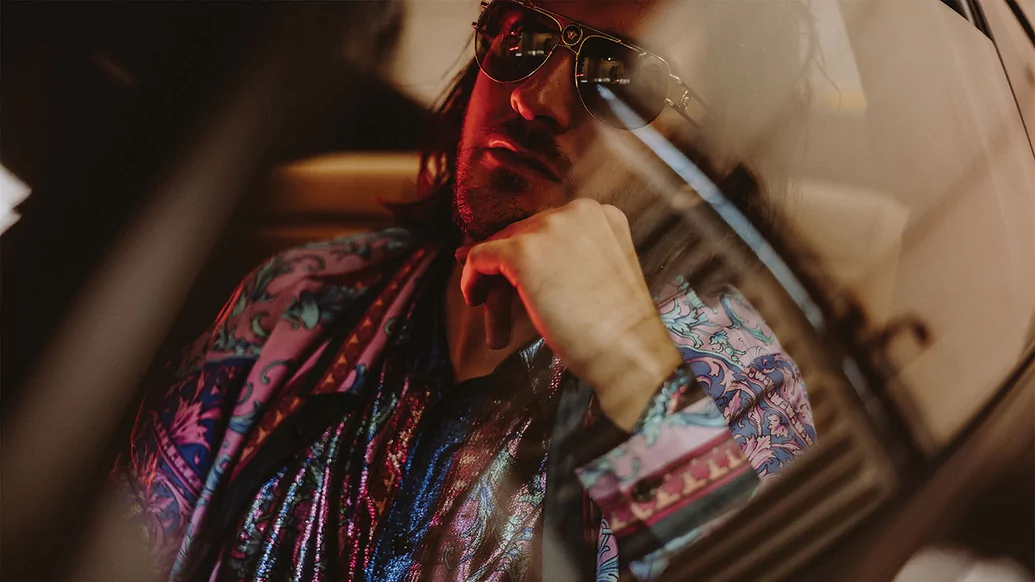
“And this is maybe also defining of me, that I just do my own thing. I like to shock people and give them something they don’t expect.”
The dreamer struck a balance by putting his head down during exams. Meanwhile, he also dove into the deep end of live performance. Zonneveld planned meticulously for his first official gig (“one with a flyer and everything”). He brought a carload of equipment (“even more than I use now”) and another critical item — an external hard drive with all of the sample files he’d planned to use throughout his performance.
“I dropped the first kick and the hard drive crashed because, of course, it couldn’t handle the bass from the subwoofer. And I’d never thought of this,” Zonneveld explains, momentarily reliving that harrowing revelation. “Suddenly, 80% of my live set was gone, and I couldn’t do what I wanted to do. So, I had to improvise, and actually this set was really, it was...” he takes a moment to find his words. “I still wouldn’t be scared to share this set today. It was actually way better than some of the ones I prepared for later.”
Whether he recognized it at that moment or not, a seed was planted. Although it was difficult to quieten the beats that filled his mind, Zonneveld completed his studies in 2015 and was awarded two masters degrees in corporate finance and real estate finance — an accomplishment he asserts was well worth the extra effort.
“I’m happy I actually finished it, because even though it doesn’t matter now, it’s just a good feeling that after all those years I had something to show,” he says. Before graduation day, his thesis advisor pulled him aside with a future-shaping proposition. The professor offered him a well-paying job as a real estate investor for a large bank, but there was little convincing Reinier that music should remain a side hustle.
“It would have been perfect, money-wise, to pay off my debt and to live a bit normal,” Zonneveld explains. “On the other hand, I didn’t want to work in the bank. I would fucking hate that kind of work.”
He also had reason to believe that a successful career in electronic music was in reach. After releasing his debut ‘Joker’ EP in 2011, producers started to take note of his output, and many of them had his tunes sitting in their queues. It wasn’t long before tastemakers like Chris Liebing, Adam Beyer, and Armin van Buuren began incorporating Zonneveld’s unreleased originals into their sets.
“For example, I was at Awakenings in 2015 and literally everyone at the festival — every DJ — played at least two tracks by me,” Zonneveld explains. “So, I was at this festival as a visitor and everywhere I go, I hear my tracks, which was actually super nice, of course, but also a bit frustrating, because I thought, ‘Okay, I can release these tracks, I can play these live for people.’” Zonneveld basically told his advisor thanks, but no thanks.
“I think he was pretty insulted,” Zonneveld shares candidly. “But I didn’t even go into the talk, because I was speaking with my parents about this and with my best friend, Axel, who is now my manager. They both said, ‘You know, just make music. Try for one year and if it doesn’t work, then you can always get a normal job.’”
Lucky for the aspiring producer, it only took a few months before he found his affirmation.
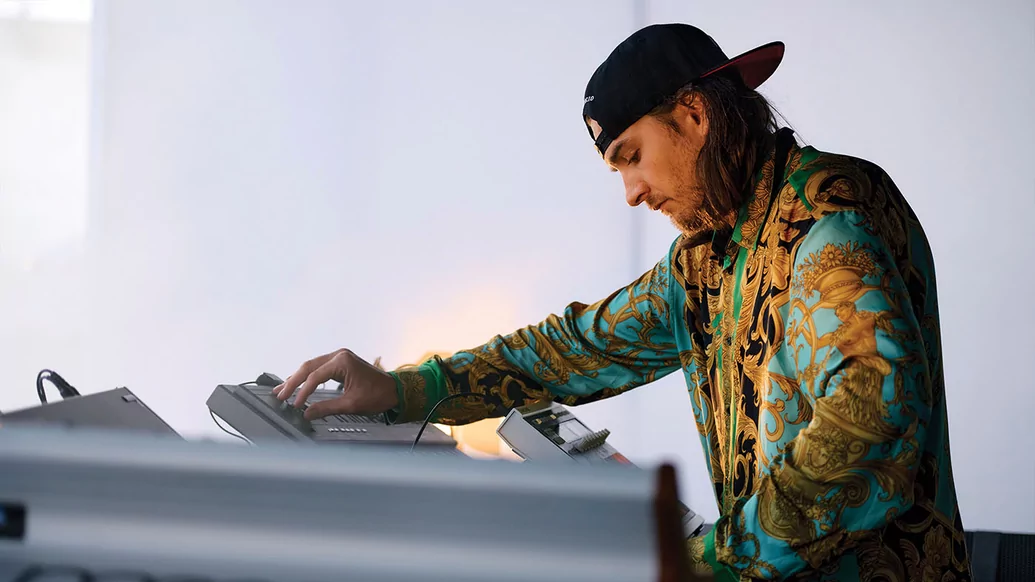
During this exploratory period, Zonneveld received an unexpected phone call from the German producer and head of the Stil Vor Talent label, Oliver Koletzki. “I sent him six demo tracks, and he actually called me to say, ‘Well, it’s super good,’ and he was like, ‘Now what? What do you want to do?’” he recollects from that fateful exchange. One thing was clear — Zonneveld wanted to play more often, and at bigger and better events, not the festival opener slots or the late-night sets at shabby forest raves that too often left him sprinting toward tree lines to avoid fines and infractions.
Zonneveld was no fool. He’d heard stories about established producers that made promises to young artists that they ultimately didn’t keep. But he had a good feeling about Koletzki, and rightfully so.
“He called me on New Year’s Eve and showed me the bookings,” Zonneveld shares, with palpable gratitude in his voice. “He basically put me on all these German gigs, and all these gigs in Austria after that. He booked me as a support act, not for opening, but for closing or playing peak-time, because he really wanted to give me the chance to show my music.”
Soon he found himself doling out signature live sets at venues packed with thousands of techno and progressive house fans, rather than the few hundred faces who made up his average crowd near home. “From that moment, it took off super fast,” Zonneveld continues. “And then suddenly, the rest of Europe was also interested, because when you do very well in Germany, the rest of the world also looks at it like it must be good, like it’s German-approved, you know?”
In 2016, Stil Vor Talent released Zonneveld’s second LP, ‘Megacity Servant.’ The 16-track collection offered listeners a glimpse into his melodic proclivities. His single ‘Things We Might Have Said’ went on to top the Beatport charts, and soon its clean, pulsing low-end and expertly mixed vocals became a fixture of club sets across his home continent and beyond.
Still, those who went to see Zonneveld in the flesh were in for much more than just an upbeat tech-house set, something his breakout hit might have otherwise suggested. Before his star-making run in Germany, the music chameleon said he struggled to find bookings because of how varied his performances could be. “Sometimes I would play super mellow and sometimes I’d go super hard,” Zonneveld shares. “And then for the people who booked me, it was very hard to pinpoint on which stage they should put me. They would rather book something that’s safe. So, my reaction to that was always to diversify even more.”
He recalls one instance in which even Koletzki questioned his selection. Back in 2016, it was atypical for techno acts to end their sets ripping tracks in the 160-180 BPM range. His track ‘Hard Gaan’ (a version of which he would later release on his third studio album, ‘Church of Club Music’), his go-to closer, already pushed near that pace around 144 BPM.
“I remember the first time I did it was during a live improv in Berlin in 2016,” he explains. “I was improvising with the synthesiser and then I told the guy, ‘I’m just going to put the BPM very low and then speed it up and see what happens. I ended up at about 144, and then I put a distorted kick drum on it, and I see Oliver Koletzki actually coming out from backstage toward me, and he says, ‘This is a joke, right? This is not serious!’ I said, ‘Yeah, look at the dancefloor.’”
The crowd was enthralled with his off-beat treatment. “And this is maybe also defining of me, that I just do my own thing,” he says. “I like to shock people and give them something they don’t expect.” That “unexpected” quality is likely what attracted Koletzski to his art in the first place. “He’s really somebody who helps,” Zonneveld says of his early mentor. “I’m super thankful for that. Now I try to do the same with upcoming acts, to give them this next step, because it’s very important for the scene when somebody gives the younger generation a chance, otherwise it will always be the same boring old sound, you know? It needs to develop.”
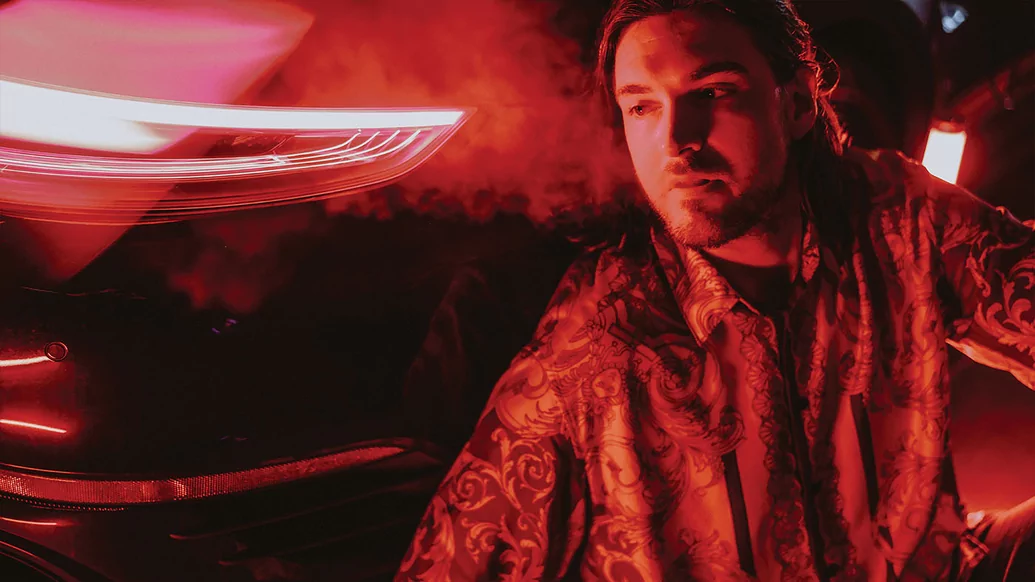
In 2017, Zonneveld launched his Filth On Acid imprint with a mission to foster creative expression, both within himself and other genre-bending artists in his periphery. Names like Eli Brown, Teenage Mutants, and HI-LO (aka Oliver Heldens‘ techno side project) are behind some of the label’s top-charting releases at present, while Carl Cox and Camelphat are responsible for some of its best-performing cuts to date.
“It doesn’t matter if it’s super hard techno or a bit more melodic, as long as I’m really blown away by the track, I sign it. That’s the main criteria,” he shares of the songs that make it to his platform. “As my taste changed over the course of five years, the label also changed with it. It’s not one identical sound that you can easily pinpoint.”
Listen through Zonneveld’s own releases on FOA, and that statement rings astoundingly clear. Driving tracks like his feverish ‘Move Your Body To The Beat’ represent the more intense side of his far-reaching discography. Its thumping kicks, slithering snares, brash lyrics, and undulating synth lines practically embody the label’s namesake. Then there’s ‘Inferno,’ his 2018 collaboration alongside Carl Cox and Christopher Coe that packs booming, ascendent chords and reverberating heat across its almost nine-minute duration.
A recent team-up with Dutch hardcore producer Angerfist sees the duo pump similar textures into the blistering 150 BPM range. He says their track, ‘Fist On Acid,’ marks a pandemic-induced full-circle moment — Angerfist headlined the very first rave Zonneveld ever attended when he was just a teenager. As tour dates dissipated in the wake of Covid, he finally had time to work in the studio with one of his early heroes.
And despite the variance in his works, all of Zonneveld’s originals, collaborations, and the occasional remix somehow find their right place within his energetic marathon sets, which often exceed eight hours in length. While show-goers are likely to experience their favourites in that signature “unexpected” light, their maker insists that their initial creation is very structured.
“In the studio, I like to work very precisely, lay out everything exactly, and there’s no room for improvisation,” Zonneveld explains of his technique. “It needs to be very tight and everything is where I want it to be, no random stuff. Nothing is left to chance. Everything is drawn out and super detailed.”
When he hits the stage, it’s a different story altogether, and it’s part of what makes his act so singular. “Sometimes with my bigger hits, first of all, ‘Move Your Body To The Beat’ — my most extreme track — I try to not change that too much,” he explains of his approach. “But then at the end, when it drops for the last time, I’ll put something completely crazy on top that combines [elements] to make an entirely new track. It’s fun — this way, people can still listen to that track they heard at home, it makes sense to me.” He’s quick to note, however, that when it comes to unreleased music, he holds nothing back.
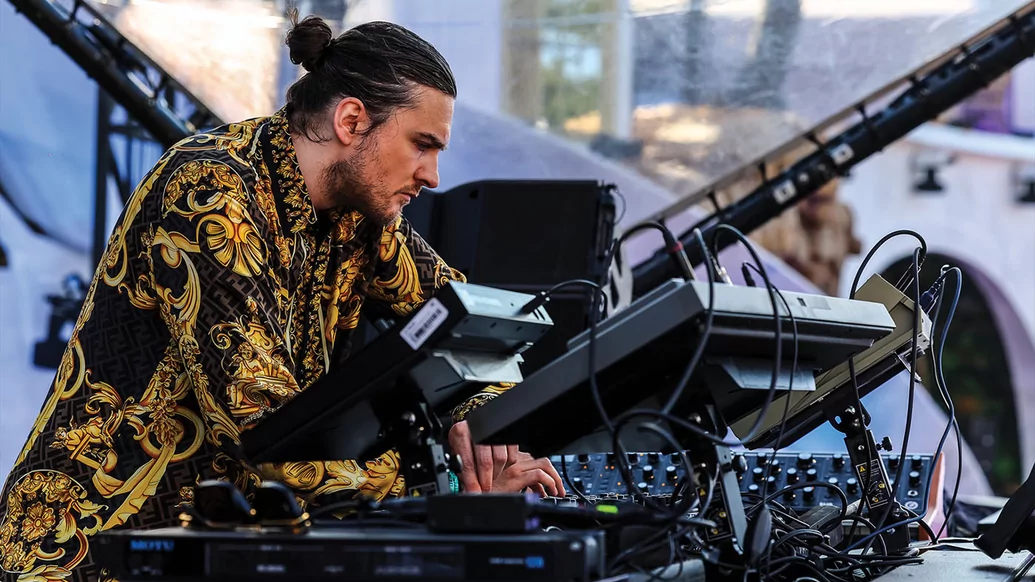
When we ask Zonneveld how much unreleased music he’s sitting on, he doesn’t have an immediate answer. “I can look here at iTunes, and do a check under my own name,” he says, before taking a pause. “It says 77 days of music.” Of that amount, he projects 98 or 99% is unreleased.
A library that expansive suggests seemingly endless possibilities for future iterations. However, it can pose obstacles, too. “When you have a set, it’s sort of like your own little world that you create,” Zonneveld explains. “And the colours and the shapes of everything [within it] are decided by the music — not only the melodies, but also the sound design and how things sound when you mix them together. The vocals and background sounds and all these little things I was not always completely happy with before.”
The lockdown, much like it created time for high-profile collaborations, also offered an opportunity for Zonneveld to think critically about his performances without a packed calendar looming overhead. He dug into the minute details to craft a vibe that’s right for any setting, whether that be a twilight hours warehouse rave where he has the freedom to go dark or a rapid-fire 60-minute festival set where he’ll showcase hallmark singles presented anew, as always through the lens of live audio manipulation.
North American followers can catch Zonneveld in the latter sense at upcoming events like Piknic Électronik in Montreal on September 24th, where he’ll share the bill with one of his early influences, Richie Hawtin. That same weekend, he’ll set off west for San Diego’s CRSSD festival. At both of those showings, he’ll run his own tech and sound setup, a practice that allows him to zone in and take control of his station.
Thankfully, most events already have his standard Roland TR-909, Moog Sub37, and Roland sh101 ready and waiting for him. (That’s in addition to the Roland tb303 he brings himself.) Zonneveld is back on the road, but this hasn’t stifled his desire to pursue fresh sonic avenues in the studio. Nederhop, a Dutch branch of hip-hop, is one area of interest. When he’s home, he runs sessions with rappers and produces their tracks. He’s also considering how to expand upon his own repertoire.
“I would like to perform with an alias for more groovy tech-house,” he shares. “I’m still exploring this side, and I might start some gigs with this. If time allows me to, that would be great!” Fans of the hard stuff, don’t fret — Zonneveld adds with conviction that “maybe there will be a side project at some point, but what I love the most is peak-time techno.”
Perhaps it’s not so surprising that the inventive star honed his craft in ephemeral environments — in parties that could go under at a moment’s notice because of one noise complaint, or a single drop too loud. Every night was an act of improvisation, a product of quick thinking and decisions made on-the-fly. Now, the future for Zonneveld rings limitless, and no one can shut this man down.

